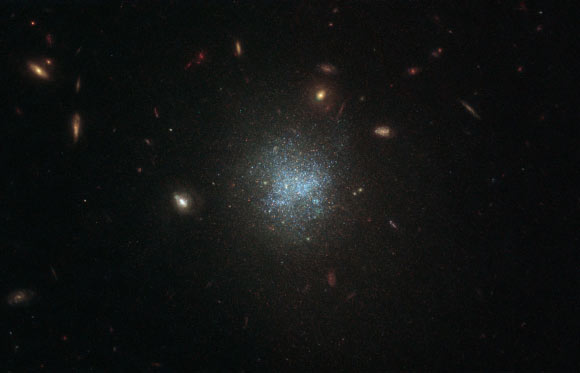Hubble Observes Isolated Dwarf Galaxy UGC 695 | Astronomy – Sci-News.com
The NASA/ESA Hubble Space Telescope has taken a beautiful picture of a galaxy called UGC 695.

This Hubble image shows the dwarf galaxy UGC 695. The picture is made up of observations from Hubble’s Wide Field Camera 3 (WFC3) in the infrared and optical parts of the spectrum. Three filters were used to sample various wavelengths. The color results from assigning different hues to each monochromatic image associated with an individual filter. Image credit: NASA / ESA / Hubble / D. Calzetti.
UGC 695 is an isolated, gas-rich dwarf galaxy located in the constellation Cetus.
Also known as LEDA 4013 or SDSS J010746.44+010349.2, the object lies at a distance of 30 million light-years.
UGC 695 is also classified as a low surface brightness (LSB) galaxy — a dwarf galaxy with a brightness that is at least one magnitude lower than the ambient night sky.
“LSB galaxies are so faint that their brightness is less than the background brightness of Earth’s atmosphere, which makes them tricky to observe,” the Hubble astronomers said.
“This low brightness is the result of the relatively small number of stars within them.”
“Most of the baryonic matter in LSB galaxies exists in the form of huge clouds of gas and dust.”
“The stars are also distributed over a relatively large area.”
Like dwarf galaxies, LSB galaxies have a high fraction of dark matter relative to the number of stars they contain.
Astronomers still debate about how these galaxies formed in the first place.





